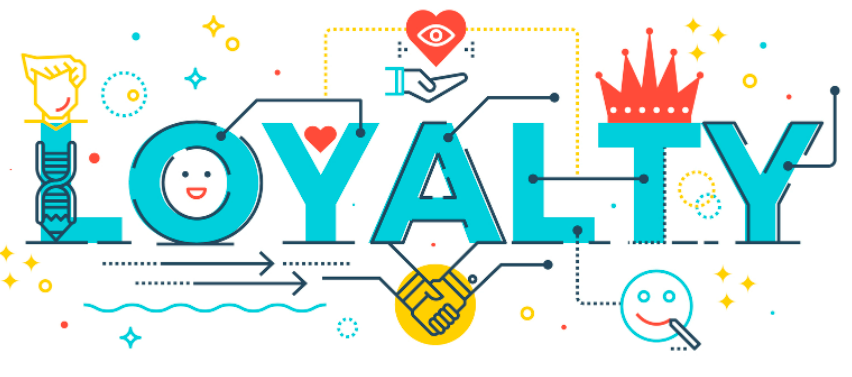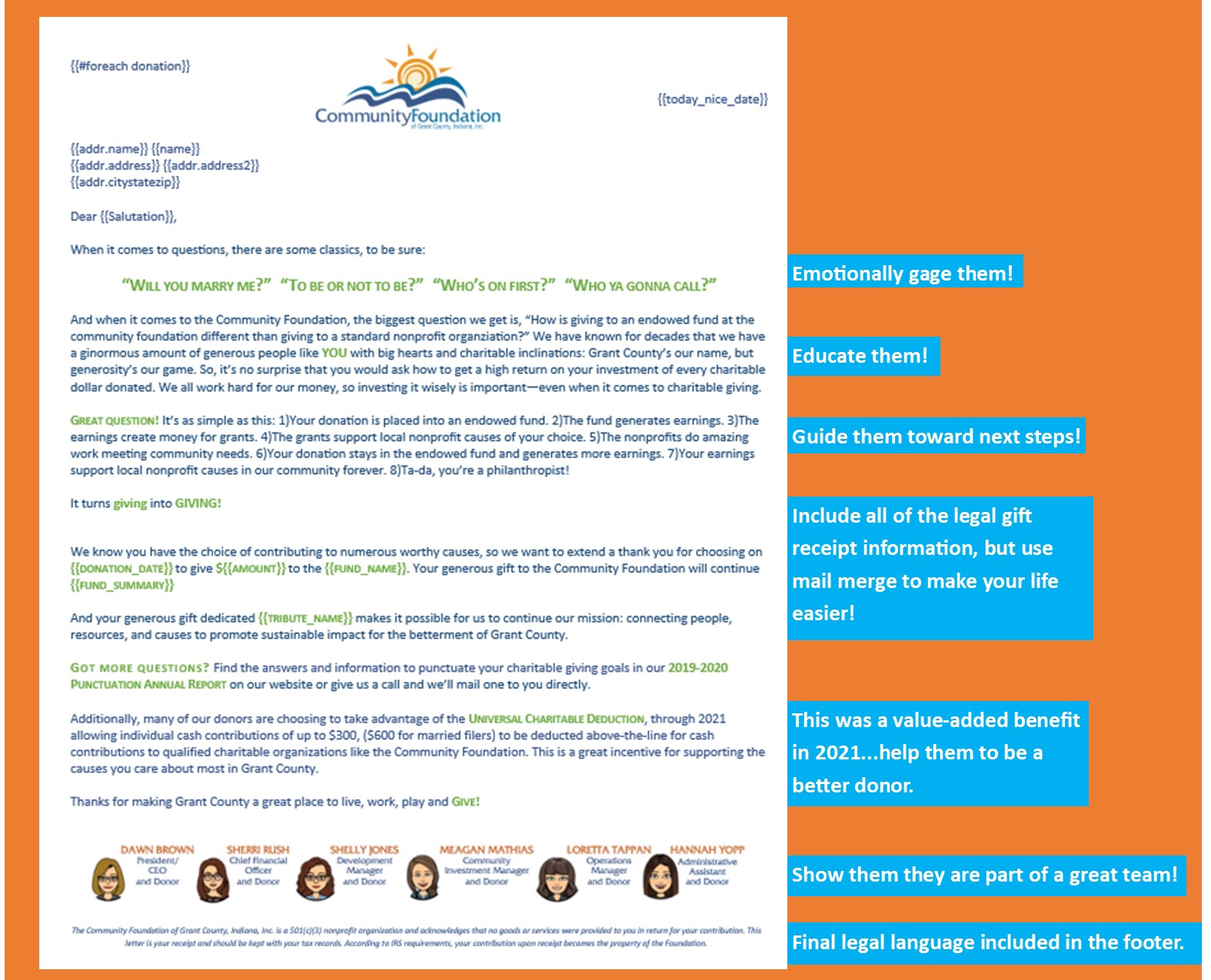The Secret Sauce
May 18, 2022
Beware! What I’m about to tell you is TMI—Too. Much. Information. But it is true. When I was 15 and first started dating my now husband, he had a total of seventeen hairs on his chest. Seventeen! That was it. I remember it vividly. Our first date was at my best friends house and we went swimming. So, it was easy to count them. Decades later and it’s a completely different story. Dare I say that he’s the furriest member of the Brown family—and that includes our dog Rocket who is looking like a four-legged Bob Ross right now he needs a haircut so bad.

I tell you this ridiculous story because people really get caught up in the numbers. But as William Bruce Cameron once said, “Not everything that counts can be counted, and not everything that can be counted counts.” I think it’s because our resources always seem limited that keeps us continually counting things. More is more, right? But that’s a lie. It’s the difference between a scarcity mindset and an abundance mindset.
With a scarcity mindset, you believe there is only so much to go around and if one person or organization has too much, there is only a small amount left for everyone else. It’s the very definition of a zero sum game wherein someone wins, so someone else must lose. If your mind is swimming in this type of thinking, you’ll begin to focus on what you don’t have and your brain will begin to believe that lie.
With an abundance mindset, you realize that there’s plenty to go around. This glass-half-full mindset allows you to focus on what you already have, not what you don’t have. You can be at peace and genuinely grateful for what you have. When the fear of scarcity disappears, abundance appears.

And wouldn’t you know it, there are both left brain and right brain applications to an abundance mindset!
Left Brain Marketing Methods: There’s this common misperception about philanthropy in our country and maybe even around the world. Oftentimes, people believe that philanthropy is only for the wealthy. And while some wealthy people are philanthropic, it’s not true for everyone. However, there is one thing that all philanthropic people have in common no matter what their socioeconomic status: they’re all generous! That’s it. That’s what all donors have in common—Generosity! That’s why, when diving deep into your data, it’s important to use your left brain logic to identify donor loyalty, too. It’s the secret sauce of abundance that often goes unnoticed and under-appreciated.
Right Brain Marketing Moxie: No matter what geographic region you’re raising money in, you likely feel like you have competition. After all, every nonprofit out there is vying for the attention of your donors, right? Not necessarily. This is why I harp so much on your Minimum Viable Audience. But the bigger story is one that necessitates an abundance mentality--one that believes that generosity begets generosity. One that knows there really is enough to go around. Maybe putting more effort into what your donor needs instead of what your ‘competition’ is doing will heed better results. If nothing else, it will certainly remind you why you love what you do so much. Because those generous people who love you and your mission are <<mwah>> chef’s kiss! 👩🍳💋
Let’s get that glass half full, shall we?

Left Brain Marketing Methods: Maybe you once believed that philanthropy was only for the wealthy…maybe you still do. I learned a long time ago that simply wasn’t true. It doesn’t mean that wealthy people aren’t generous—some certainly are! But that doesn’t define philanthropy. Philanthropy is defined 100% by the generosity from people of all socioeconomic levels. I live in a county in Indiana that’s been in the state’s Top Ten in child poverty for decades. Yet out of 92 counties, we are the 3rd most generous county in our state. The dichotomy is odd, isn’t it? But it just goes to show that wealth and generosity aren’t necessarily cousins. That why donor loyalty should be a tool in your left brain marketing toolbelt.
Now, usually this is when people get confused in the difference between donor retention and donor loyalty. While both are great to track, they are not the same. Donor retention means that a high percentage of the people who gave to your organization last year gave again this year.
Donor Retention #Math: (Returning donors year 2/Donors year 1) x 100 = Your percent of donor retention
While your loyal donors will certainly fit into this category, it’s bigger than that. You must earn a donor’s loyalty. And this can only happen when you treat your donors like the unique individuals that they are. You send them messages that are important for them to know, from the person that’s best to send that message, at a time that the message is the most useful to them. This is not your ‘or current resident’ marketing strategy! When you’re strategic about communicating custom messages to your donors, your results will increase. That’s why you can raise more with your Minimum Viable Audience—you’re creating Loyal Donors. When you earn this type of loyalty, your donors become highly interested in everything you’re doing. They open your mail. They read your mail. They attend your events. They act on your requests. They tell their friends about you. Heck, they might even join your board! They become a secondary marketing department because their loyalty runs deep. Think Cubs fans!

Yes, you will see Loyal Donors on your annual Donor Retention List from year-to-year. But what you’ll notice if you dig a bit deeper is that those Loyal Donors didn’t just contribute once, they acted on your asks multiple times in the past year. Don’t get caught up on the amount those checks were written for, it’s the loyalty that counts here. Concentrate on the generosity more than the wealth here because Loyal Donors are more likely to include you in their will or estate plan or leave you and major gift later in life, even if they aren’t one of your Top 50 donors right now.
Loyalty literally means unswerving allegiance--I looked it up. Who doesn’t want a donor like that? Sure, donor retention numbers are important, but when you’re creating your donor segments and identifying who might be best to communicate with, pull those reports from your database that show the donors who give multiple times a year no matter what the amount. That’s a fundraising honey hole!
Right Brain Marketing Moxie: Whether you’re looking to attract that donor with a substantial giving capacity or to increase the number of gifts or gift amounts of your current donors, you’ll have to strategically invest your resources to do so. That means you must stop spending your energy minding the business of your so-called competition and concentrate on dialing into what your unique donors genuinely want and need from you to become a Loyal Donor. Hopefully, you’ve met IDA, your Ideal Donor Avatar. When you’re crafting your donor communications to your ideal donors in manageable, like segments, you’ll be able to focus on building a relationship with them from the get-go. In fact, thinking in this manner turns your marketing/communications/stewardship program into a Donor Loyalty Program because everything you’re communicating to your donor-base is given in an effort to increase their loyalty—remember that means unswerving allegiance.
 There are certainly many blogs to be written on Donor Loyalty. So, today, let's focus on one of the keys to an abundance mindset—gratitude. One of the best uses of your right brain marketing moxie is determine how you’re going to thank your donors. Sure, your gift-acknowledge letter (a.k.a. receipt) is the first step in building that donor relationship—as long as you intentionally do just that. If you’re only sending out a piece of paper with the amount of their gift, the date of their gift, and the other IRS language that every receipt requires, you’re wasting that true value of that stamp. Use that 8 ½ X 11 real estate to tell them a remarkable story. Who will their gift impact? What difference will it make? Give them a feel-good update that will prove to them that they are doing something that’s changing their little corner of the world! You can also invite them to participate in other ways, like a social media follow, signing up for your enewsletter, or just directing them to information about locating your bequest language--it doesn’t always have to be an ask for money.
There are certainly many blogs to be written on Donor Loyalty. So, today, let's focus on one of the keys to an abundance mindset—gratitude. One of the best uses of your right brain marketing moxie is determine how you’re going to thank your donors. Sure, your gift-acknowledge letter (a.k.a. receipt) is the first step in building that donor relationship—as long as you intentionally do just that. If you’re only sending out a piece of paper with the amount of their gift, the date of their gift, and the other IRS language that every receipt requires, you’re wasting that true value of that stamp. Use that 8 ½ X 11 real estate to tell them a remarkable story. Who will their gift impact? What difference will it make? Give them a feel-good update that will prove to them that they are doing something that’s changing their little corner of the world! You can also invite them to participate in other ways, like a social media follow, signing up for your enewsletter, or just directing them to information about locating your bequest language--it doesn’t always have to be an ask for money.
Write a personal, heartfelt note on their receipt. Send them a small token of your appreciation. Let them know that you consider them a Loyal Donor and tell them what that means! Inspire them! Intrigue them! Interest them! Make is stampworthy!

As a fundraiser, who does this challenging work, but makes it look easy, there’s something oh-so-special about knowing that your life’s work is to communicate with Loyal Donors. Those donors fill your cup, love what you do, want to make a difference with you, and just need to know how they can best help. That’s who you work for. Those abundantly generous do-gooders who are building a lifelong relationship with you as their nonprofit of choice. That’s who you need to concentrate on. Let the other nonprofits find their own Minimum Viable Audience—these gems are yours!
We all get it, it’s natural to count things, especially when you’re in the fundraising business. Just make sure you’re counting the things that really count. Loyal Donors are one of those things and the relationships you enter into with them make this work both rewarding and refreshing. Sure, counting my now husband's seventeen chest hairs wasn't vital, but the end result was a relationship that led to build our marriage, our home, and our family—now that’s <<mwah> chef’s kiss.
All My best,
Dawn
[email protected]
dawn brown creative, llc.
P.S. Fundraising is hard, even though you make it look
oh-so easy! ♥
Frideas--Friday ideas are filled with
info and inspo!
Want to participate in some Knowledge Generosity,
here's your opportunity!
What do you do with an idea? You change the world!
Stay connected with news and updates!
Join my mailing list to receive the latest news, updates, and ideas for days!
Don't worry, your information will not be shared.
I seriously hate SPAM, like for real.
So, I promise to never sell your information, for any reason.


